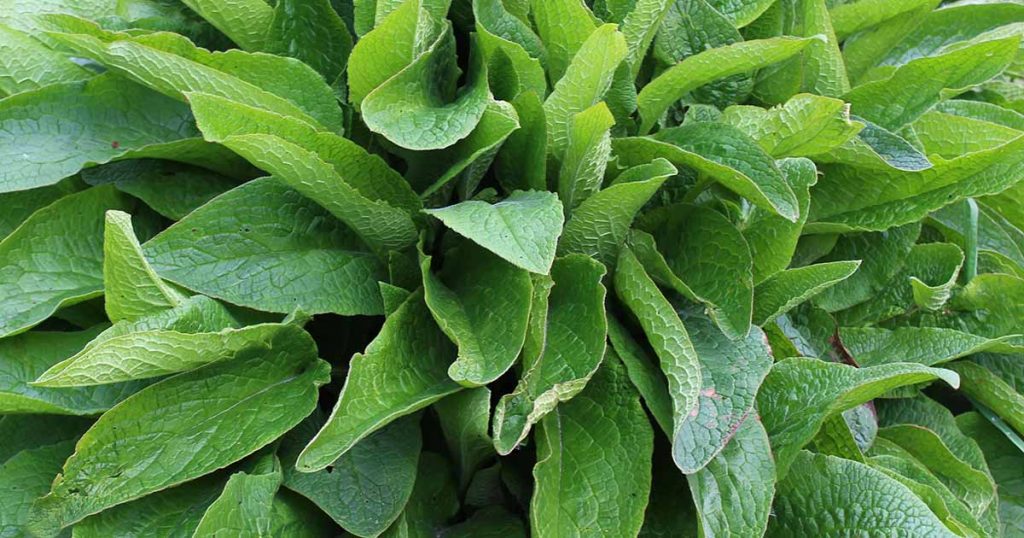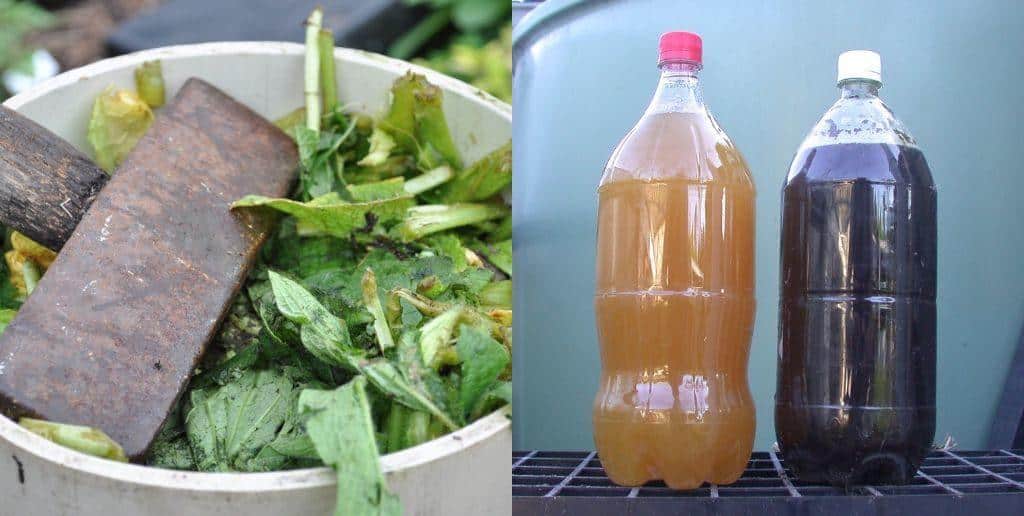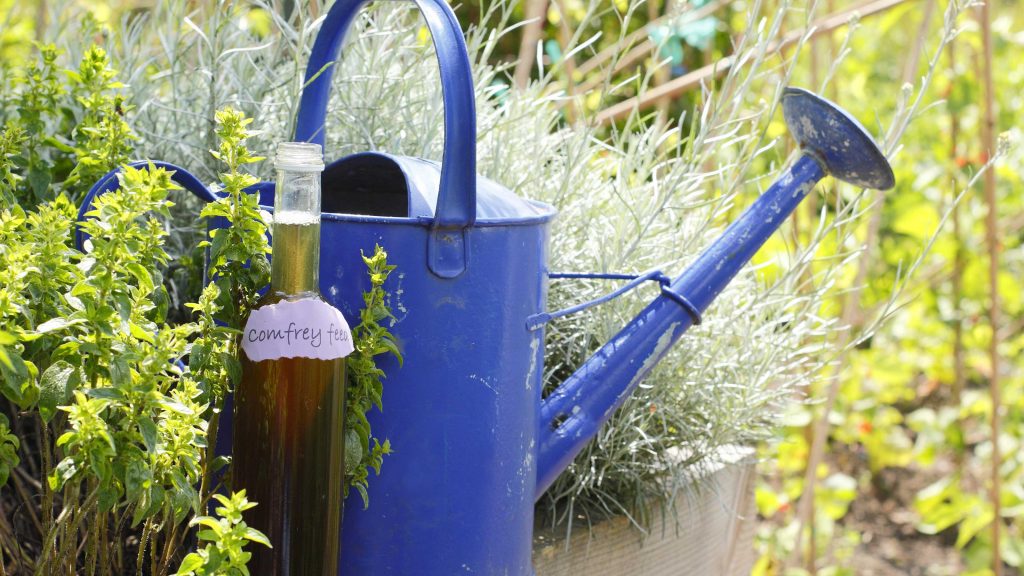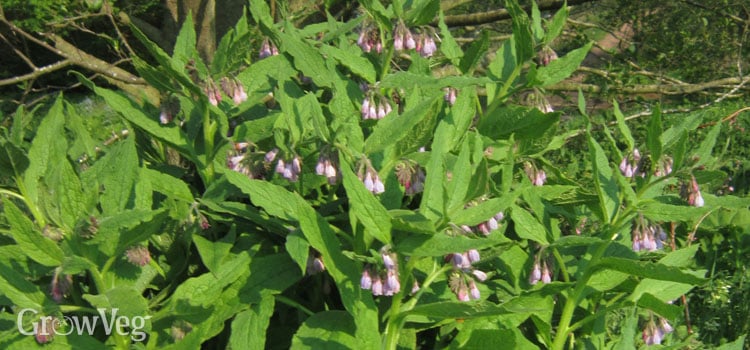Table of Contents
Comfrey tea fertiliser is a type of organic fertiliser. It is made from the leaves of the comfrey plant and is found to be highly effective in boosting the growth of plants. Comfrey is a tall perennial herb and is also known by the name of the boneset herb.
Lush greenery creates a picturesque view. Fertile soil and proper nourishment play a significant role in this. While the market is flooded with chemical fertilisers, the benefits of homemade and natural fertilisers are unchallenged. It’s good for the soil and catalyses growth.
Comfrey tea has several applications like it holds medicinal value and is also used as a fertiliser.
In the next few segments, we will focus on creating and using comfrey tea fertiliser.
Overview of Comfrey Tea Plant

It is a perennial herb, and it is characterised by its large and hairy leaves. Comfrey bears bell-shaped flowers. In addition, it has deep roots, which help the flower penetrate deep inside the soil and draw nutrients. All these nutrients accumulate in the leaves, making them a good source of plant nourishment.
Along with that, comfrey tea also has Medical Applications. This herb is used for improving skin conditions and feeling the bones. The herb is rich in Allenton, which promotes cell growth and also has medicinal benefits to this herb. Another key application of fertiliser is that it is used for organic gardens. Comfrey tea is an organic dynamic accumulator. Hence, it is an excellent source of nourishment for the plants.
How To Make Comfrey Tea Fertilizer

Choose the Right Plant: The first step is choosing the right variant. It will define the effectiveness of fertiliser. You can consider using Russian comfrey or Symphytum x uplandicum. Comfrey can be harvested twice: June and August.
Start Chopping the Leaves: Once you have collected all the comfrey leaves, it’s time to chop them into smaller pieces.
Bring Together Everything: Now you can progress to making fertiliser. For this, you would need a container with a lid and tap. The tap will help remove the liquid, and the lid will prevent the smell of comfrey leaves from disseminating in the atmosphere. Add water and chopped leaves to it.
Allow it to Work: Once you have added everything, allow this mixture to macerate for 4-6 weeks. This time is enough for the leaves to break down. And after 6 weeks, the mixture will turn blackish, and the leaves will collect at the bottom of the lid. Filter this liquid, and it is ready to use.
Creating Different Variants of Comfrey Tea Fertiliser
In the above discussion, we have discussed the basic steps of preparing comfrey leaf fertiliser. However, you can prepare them with different strengths. The following table highlights the same:
|
Strong |
Prepare strong, comfrey leaf fertilisers. You would need a container and fill it with complete leaves. Follow this by adding water. Let this mixture message for 4 to 6 weeks. During this time, the leaf breaks down and releases nutrients into the liquid. Make sure that you mix this from time to time. After 6 weeks, this mixture will turn blackish. This is an indication that the liquid fertiliser is ready. You can filter it and start using it. |
|
Weak |
If you do not want to wait for 6 weeks, you can prepare a weaker strength of comfrey tea fertiliser for this. You need to half-fill a container with chopped comfrey leaves. Follow this by adding water. Now allow this mixture to sit for 3 days. After this, you can use the liquid to fertilise the plants. |
|
Quick |
This is an instant method to prepare comfrey leaf fertiliser. For this, simply at comfrey tea leaves to boiling water. Allow it to steep for 4 hours. This will ensure that all the leaf nutrients move into the water. Now you can dilute it with a gallon of water and start using it. |
Points to Consider
If you are planning to use comfrey leaf fertiliser, here are certain things to remember:
- Do not use this fertiliser on young plants or seedlings.
- Don’t miss diluting the solution with water before using it
- Avoid using this fertiliser when it’s raining
- Applying it at the start of flowering and fruiting gives better growth.
Why is Comfrey an Apt Choice as a Fertiliser?

While several types of chemical fertilisers are available in the market, only some fertilisers are good for plants. And most cultivators trust organic compost and fertilisers. Nitrogen, Potassium and Phosphorus are macronutrients that promote the growth of plants. It is not possible for a plant to get all these nutrients from the soil every time. Hence, adding fertiliser to the plant triggers the growth.
Comfrey tea has emerged as a popular choice as fertiliser. It has a deep taproot. These roots penetrate the soil and absorb macronutrients and micronutrients. All these nutrients eventually get accumulate in the leaves. They are later harvested to form fertiliser.
The Best Kept Gardner’s Secret: Using Comfrey to Boost Growth
A lush green growth is a prized view, but to ensure the same, every gardener must nourish the plant. Adding organic fertilisers is good for the growth of the plants. Moreover, it also prevents the penetration of harmful chemicals. There are several natural sources of growth-promoting fertilisers, and comfrey tea is one of them. It can be used in different ways to initiate the growth in plants. Here are some of them:
Comfrey Tea Fertiliser
If you want to add a natural nutrient booster to the plant, consider adding comfrey tea fertiliser. Making this fertiliser is very easy. Simply steep fresh leaves of comfrey in boiling water. Leave it for some time. Strain the leaves and use the liquid to boost the growth of distressed plants. This tea fertiliser promotes the growth of plants and also initiates healthy Bloom. However, comfort fertiliser is not recommended for young plants. Moreover, this method is highly effective. Once you start adding this comfrey tea fertiliser, you can soon see the results.
Powdered Comfrey Fertiliser
While comfrey leaf fertiliser is a great choice, you can also use it in powder form. It is equally effective in catalysing the growth of plants. For this, comfrey’s dry and powdered leaves and roots are used. Preparing this fertiliser is very easy. All you need to do is to air dry the leaves and fruits. You can also use the dehydrator for the same. Once the leaves have dried, remove them from the stem and blend them to create a powder. The member, this is a concentrated form; hence, you only need a smaller amount to fertilise the soil.
You can add this powder concrete fertiliser two weeks before sowing the plants. This gives it enough time to absorb in the soil and make it more fertile. This fertiliser is best used during late winter and early spring.
Green Manure
Livestock manure or green manure is one of the best choices to promote organic growth in plants. However, access to these manures can sometimes be challenging. In such cases, you can consider using comfrey tea leaves. The livestock manure is loaded with nitrogen, Phosphorus and potassium. Nutrients are essential for the growth of the plant. Hence, in order to maintain a steady supply of these nutrients, consider adding comfrey leaves. Although the NPK value of comfrey leaves is less than lie stock manure, it is easily bioavailable to the plants.
Another benefit of using corporate tea leaves as manure is that they can be easily applied. Take the Green Leaves and add them to the top layer of the soil. When spring arises, these leaves decompose and mix with the soil, thus enhancing fertility.
Wrapping It Up
All in all, fertilisation is a crucial step to ensure the healthy growth of plants. There are several options available in the market, but most gardeners are switching to organic manure and compost. These are as effective as chemical fertilisers. Comfrey leaf fertiliser is one such option.
It is an excellent alternative to green manure and livestock fertiliser. The above discussion highlights the easy steps to prepare this fertiliser at home. You can also buy this fertiliser online. However, make sure that it is of the best quality. In addition, the comparative solution is an effective pesticide as well. It can help in preventing powder mirroring growth. Remember, before using this fertiliser, you should be diluted with water.
With these essential tips, you can use comfrey leaves to make homemade plant growth boosters.
Frequently Asked Questions
What Is the Right Way to Use Comfrey Leaf Fertilizer?
Comfrey leaf fertilizer provides perfect growth nourishment to the plants. To aptly use it, you should go first.
- Take comfrey leaves and add to the container half filled with water. Prefer to choose leaves which are young.
- Allow these leaves to seep into the water for 3-6 weeks. This will trigger fermentation.
- Now strain the liquid. It would be dark in shade and thicker in consistency.
- Before you start using it, dilute it with water. The right proportion of tea and water should be 1:10. This will create dilute comfrey tea fertilizer.
- You can add this solution every 204 weeks during the growing season of the plant.
Is There an Instant Way to Prepare Comfrey Leaf Fertiliser?
Yes, you can prepare instant comfrey tea fertilizer. For this, you need to add chop comfrey tea to boiling water. Allow this mixture to speed for at least 4 hours for the leaves to release its nutrient into the water. After 4 hours, cool down the mixture and filter it. Dilute this mixture and start using it as fertiliser.
What Is the NPK Ratio of Comfrey Leaf?
The NPK ratio is the proportion of nitrogen (N), phosphorus (P), and potassium (K) in a fertiliser. In the case of comfrey tea leaf, the nitrogen content is high, and hence, it is preferred as a fertiliser that initiates growth. The exact NPK ratio may vary based on the soil condition, harvesting time, and age of the plant. As per approximate, the NPK ratio in comfrey tea lean is 1.8-0.5-5.3.





